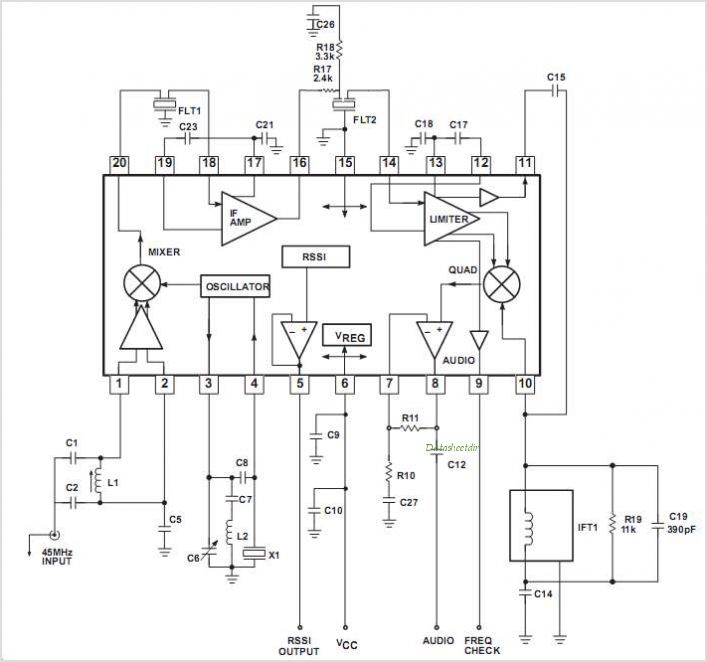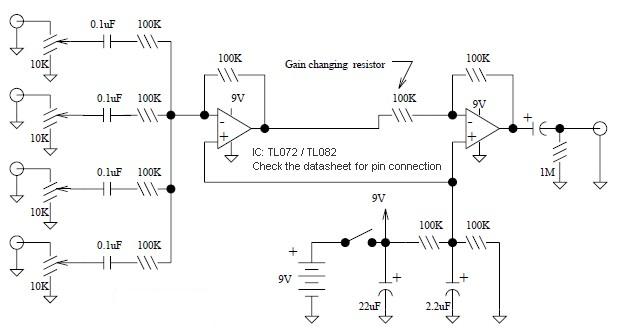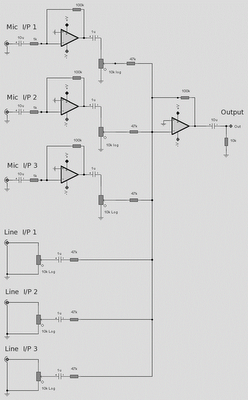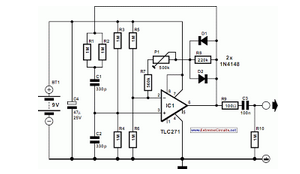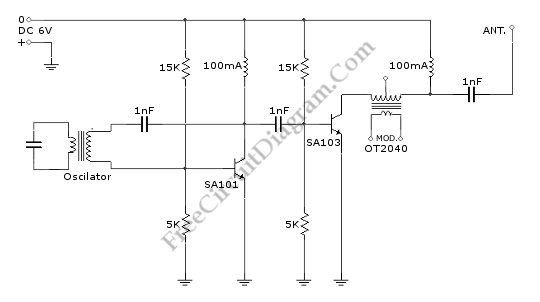
Hi Fi mini mixer
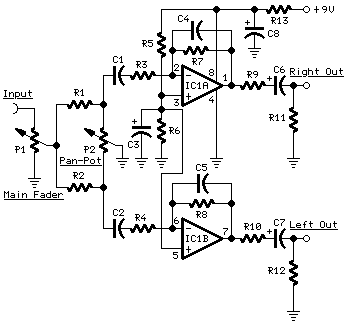
Input Amplifier Module: a low noise circuit equipped with a variable voltage-gain (10 - 100) pre-set, primarily intended as high quality microphone input, also suitable for low-level line input. High-quality modular design. 9V Battery powered - Very low current drawing. More: Tone Control Module: a three-band (Bass, Middle, Treble) tone control circuit providing unity-gain when its controls are set to flat frequency response. It can be inserted after one or more Input Amplifier Modules and/or after the Main Mixer Amplifiers.
The Input Amplifier Module is designed to provide a low noise amplification solution for high-quality microphone inputs and low-level line inputs. The circuit features a variable voltage gain that can be adjusted between 10 and 100, allowing for flexibility in signal amplification depending on the source. Its modular design facilitates integration into various audio systems, ensuring ease of use and maintenance. The module operates on a 9V battery, which contributes to its portability and low current consumption, making it suitable for battery-powered applications.
The Tone Control Module complements the Input Amplifier Module by offering a three-band equalization system, including controls for Bass, Middle, and Treble frequencies. This allows users to tailor the audio output according to their preferences or the acoustic environment. When all controls are set to a flat frequency response, the module provides unity gain, ensuring that the audio signal remains unaffected in terms of overall volume while allowing for tonal adjustments. The Tone Control Module can be positioned after one or more Input Amplifier Modules and/or after Main Mixer Amplifiers, providing versatility in audio signal processing and enhancing the overall sound quality of the system.Input Amplifier Module: a low noise circuit equipped with a variable voltage-gain (10 - 100) pre-set, primarily intended as high quality microphone input, also suitable for low-level line input. High-quality modular design. 9V Battery powered - Very low current drawing. Tone Control Module: a three-band (Bass, Middle, Treble) tone control circuit providing unity-gain when its controls are set to flat frequency response. It can be inserted after one or more Input Amplifier Modules and/or after the Main Mixer Amplifiers. 🔗 External reference
The Input Amplifier Module is designed to provide a low noise amplification solution for high-quality microphone inputs and low-level line inputs. The circuit features a variable voltage gain that can be adjusted between 10 and 100, allowing for flexibility in signal amplification depending on the source. Its modular design facilitates integration into various audio systems, ensuring ease of use and maintenance. The module operates on a 9V battery, which contributes to its portability and low current consumption, making it suitable for battery-powered applications.
The Tone Control Module complements the Input Amplifier Module by offering a three-band equalization system, including controls for Bass, Middle, and Treble frequencies. This allows users to tailor the audio output according to their preferences or the acoustic environment. When all controls are set to a flat frequency response, the module provides unity gain, ensuring that the audio signal remains unaffected in terms of overall volume while allowing for tonal adjustments. The Tone Control Module can be positioned after one or more Input Amplifier Modules and/or after Main Mixer Amplifiers, providing versatility in audio signal processing and enhancing the overall sound quality of the system.Input Amplifier Module: a low noise circuit equipped with a variable voltage-gain (10 - 100) pre-set, primarily intended as high quality microphone input, also suitable for low-level line input. High-quality modular design. 9V Battery powered - Very low current drawing. Tone Control Module: a three-band (Bass, Middle, Treble) tone control circuit providing unity-gain when its controls are set to flat frequency response. It can be inserted after one or more Input Amplifier Modules and/or after the Main Mixer Amplifiers. 🔗 External reference
